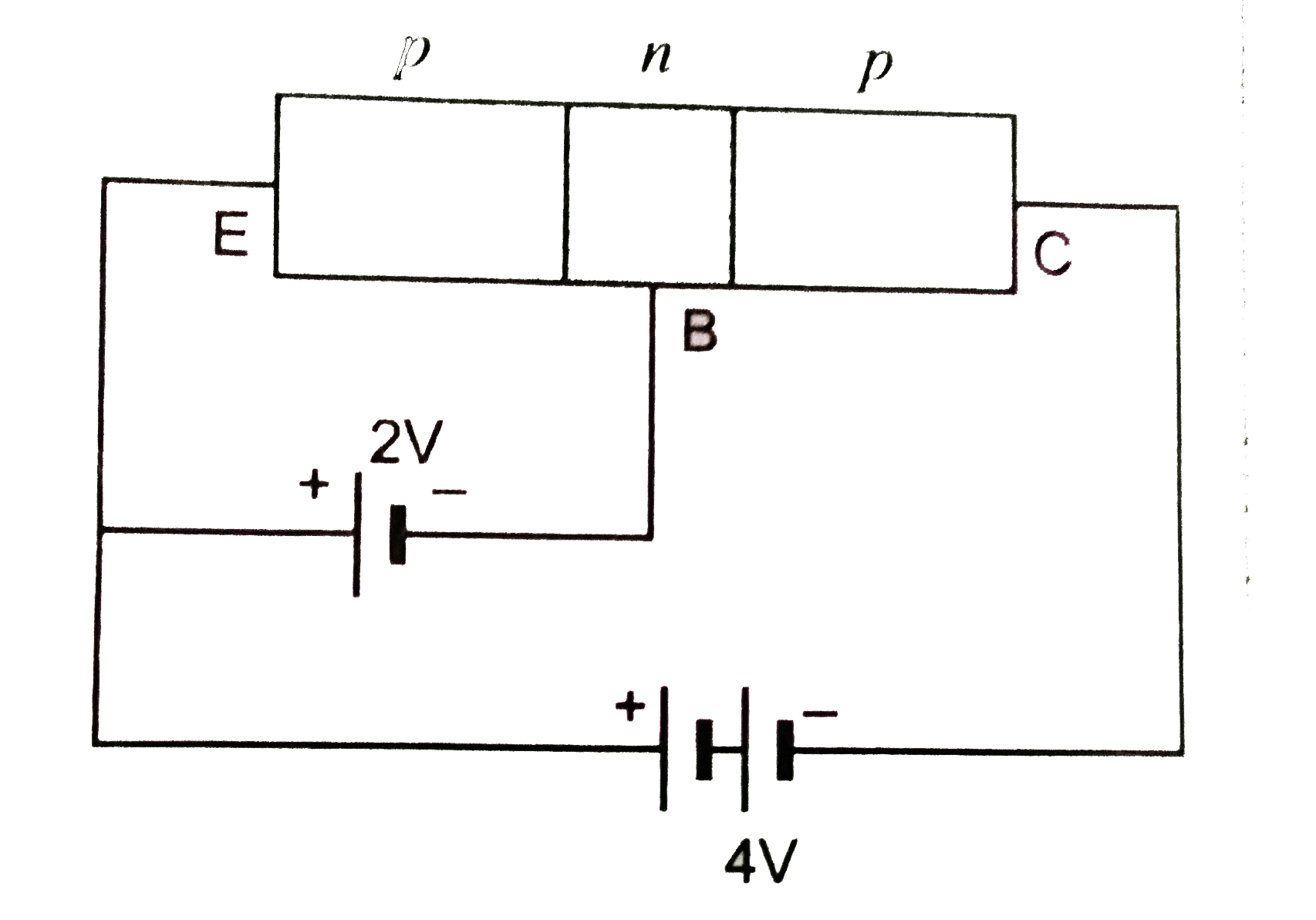The minimum potential difference between the base and emitter required to switch a silicon transistor ON is approximately.Solution in Tamil
IV
3V
5V
4.2 V
The correct Answer is:a
For switching on a silicon transistor,(VBE)min≈!V
Topper's Solved these Questions
- SEMICONDUCTOR ELECTRONICSBOOK - FULL MARKSCHAPTER - SEMICONDUCTOR ELECTRONICSEXERCISE - Additional Question (Short Answer Questions)
22 Videos
- SEMICONDUCTOR ELECTRONICSBOOK - FULL MARKSCHAPTER - SEMICONDUCTOR ELECTRONICSEXERCISE - Additional Question (Long Answer Questions.)
3 Videos
- SEMICONDUCTOR ELECTRONICSBOOK - FULL MARKSCHAPTER - SEMICONDUCTOR ELECTRONICSEXERCISE - Textual Evaluation Solved (Numerical Problems)
5 Videos
- SAMPLE PAPER-8BOOK - FULL MARKSCHAPTER - SAMPLE PAPER-8EXERCISE - PART-IV
10 Videos
Similar Questions
What are passive and active components.
View SolutionExplain the classification of materials.
View SolutionThe given circuit has two ideal diodes connected as shown in figure below. Calculate the current flowing through the resistance R1

View SolutionDerive an expression for electrostatic potential energy of the dipole in a uniform electric field .
View SolutionIn a silicon transistor, the base current is changed by 20 muA . This results in a change of 0.02 V in base to emitter voltage and a change of
View SolutionThe potential difference across the collector of a transistor, used in common emitter mode is 1.5V, with the collector resistance of 3kΩ. Find (i) the emitter current and (ii) the base current, if d.c. gain of the transistor is 50.
View SolutionIn the p-n-p transistor circuit shown in Fig.

What is the potential difference between base and collector?
What is the nature of biasing between emitter base junction and collector-base junction?
View SolutionThe output characterstics of an n−p−n transistor represent, [IC = Collector current, VCE = potential difference between collector and emitter, IB = Base current, VBB = voltage given base , VBE = the potential difference between base and emitter].
View Solutionट्रांजिस्टर की संग्राहक धारा , आधार धारा तथा उत्सर्जक धारा में क्या संबंध होता है ?
View Solutionट्रांजिस्टर की संग्राहक-धारा, आधार-धारा एवं उत्सर्जक-धारा में क्या सम्बन्ध होता है ?
View Solutionn - p - n ट्रांजिस्टर से बनाये हुए एक उभयनिष्ठ-उत्सर्जक प्रवर्धक परिपथ में निवेशित तथा निर्गत विभवों के बीच कलान्तर का मान होगा :
View Solutionट्रांजिस्टर की संग्राहक धारा, आधार धारा एवं उत्सर्जक धारा में क्या सम्बन्ध होता है ?
View Solutionट्रान्जिस्टर को स्विच की भाँति उपयोग करने के लिए उभयनिष्ठ उत्सर्जक विधा रखते हैं।
View SolutionWith respect to the potential of emitter, base and collector, a NPN transistor conducts when
View SolutionIn a transistor, the emitter , base and collector are respectively
View Solutionएक सिलिकॉन ट्रॉजिस्टर को 'ऑन' करने के लिए आधार तथा उत्सर्जक के बीच न्यूनतम विभवांतर लगभग है
View Solution
